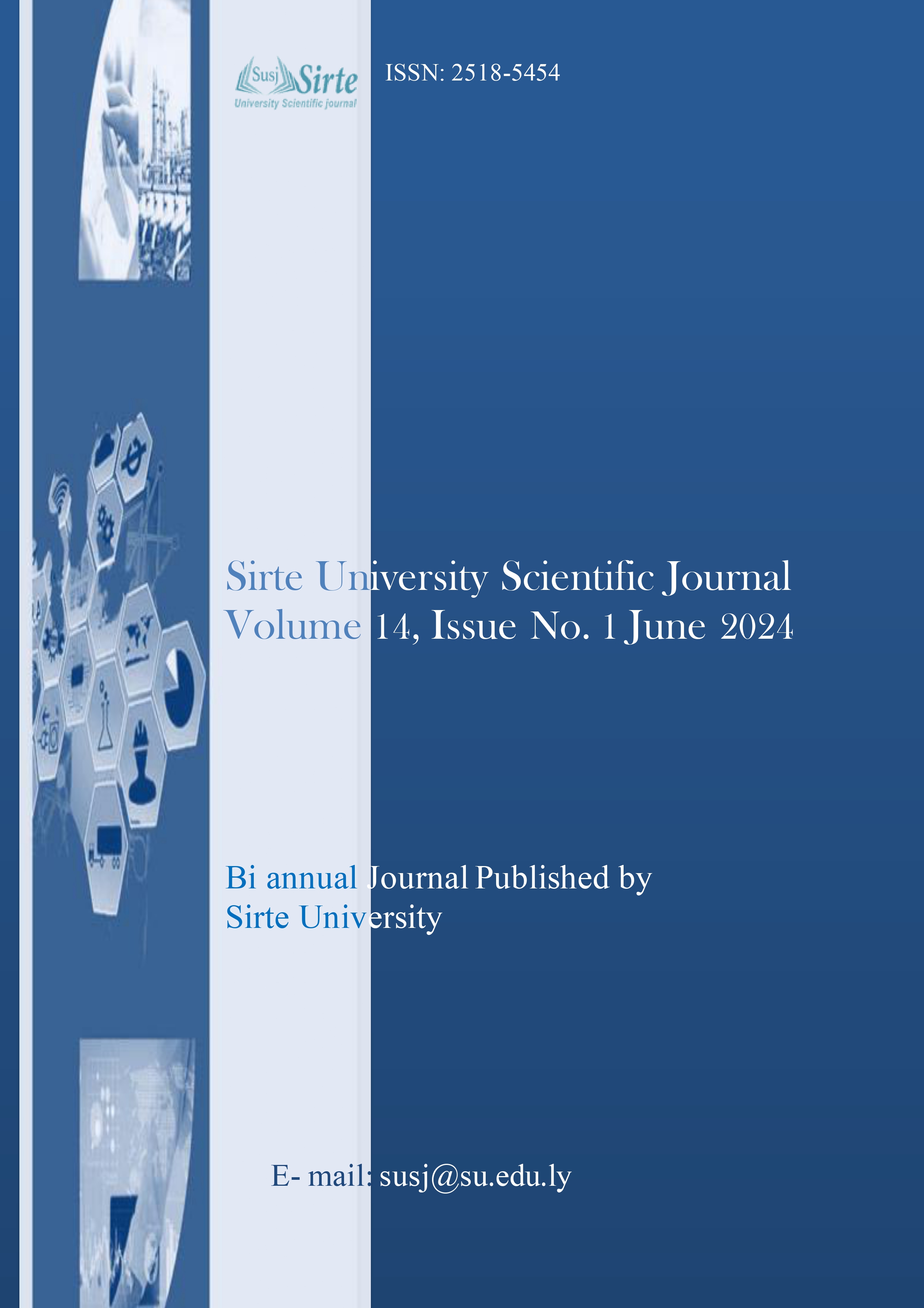The Implementation of Fuzzy Logic and Fast Fourier Transformation in Image Processing (Linear & Non-Linear Filters)
DOI:
https://doi.org/10.37375/susj.v14i1.2798الكلمات المفتاحية:
Fuzzy Logic، Spatial Domain، Frequency Domain، Fourier Transform، Image Processingالملخص
Fuzzy logic has several impacts on our daily life, and also offers a solution of non-linear problem of real world; expert systems and artificial intelligence. The use of fuzzy logic provides flexibility which is perfect for development of computer vision and image processing technologies. Image processing is a technique for adding effects to an image, obtaining an improved image, or obtaining some relevant information. The Fourier transform has a wide range of industrial applications, but it makes a significant contribution to image processing domains including image enhancement and restoration. This paper introduces applying the frequency domain (Fourier transform) and Spatial domain in image processing. The work divided to three main sections, the first section views literature review of Fuzzy logic, applications of fuzzy logic .Fast Fourier transform. The second section presents image processing; includes Frequency and spatial domain. Spatial domain proposes some selected filters (linear and non-linear). Frequency domain displays Fast Fourier transform equations to convert the processed data to fuzzy representation. Particularly Fourier theory of image processing procedures implemented using “MATLAB” software. The final section concluded the results and conclusion.
المراجع
Alejandro Gomez, Echavarria, Juan P Ugarte, Catalina Tobon. (2020) "The fractional fourier transform as biomedical signal and image processing tool". Biocyberentics and biomedical Engineering 40(3), 1081-1093.
Bickey K S, vansh K, Rohan R, Sakil A, Anshul S.(2020) “ Evaluation and Comparative study of edge detection techniques”. IOSR Journal of Computer Engineering 22(5), 6-15
Frank Dernocourt, (2013). Introduction of fuzzy logic.Massachustts Institute of Technology, 21, 50-56.
García, J., Molina, J. M., Besada, J. A., & Portillo, J. I. (2005). A multitarget tracking video system based on fuzzy and neuro-fuzzy techniques. EURASIP Journal on Advances in Signal Processing, 2005(14), 1-18.
Gómez-Echavarría, A., Ugarte, J. P., & Tobón, C. (2020). “The fractional Fourier transform as a biomedical signal and Image Processing Tool”: A Review. Biocybernetics and Biomedical Engineering, 40(3), 1081–1093.
Jiang, Y., & Chai, T. (2015, December). Image Processing and Analysis Based on Partial Differential Equation Method. In 2015 4th National Conference on Electrical, Electronics and Computer Engineering (pp. 985-990). Atlantis Press.
Kaur, R., & Singh, A. (2019). Fuzzy logic: an overview of different application areas. Advances and Applications in Mathematical Sciences, 18(8), 677-689.
Kumar, V., & Nanda, M. (2008). Image Processing in Frequency Domain using Matlab®: A Study for Beginners.
Lotfi, Z.(2013) Real-life Applications of fuzzy logic. Hindawi: Publishing Corporation.
Mahashwari, T., &Asthana, A. (2013). Image enhancement using fuzzy technique. International Journal of Research in Engineering Science and Technology, 2(2), 1-4.
Mandwe, A. A., &Anjum, A. (2016). Detection of brain tumor using k-means clustering. International Journal of Science and Research (IJSR), 5(6), 420-423.
N. Kanwal, A. Girdhar, L. Kaur and J. S. Bhullar, "Detection of Digital Image Forgery using Fast Fourier Transform and Local Features," 2019 International Conference on Automation, Computational and Technology Management (ICACTM), London, UK, 2019, pp. 262-267,
Panchi Li, Hong Xiao.( 2018) "An improved filtering method for quantum color image in frequency domain". International journal of theoretical physics 57(1), 258-278,.
Patané, G. (2020). Continuous Fuzzy Transform as Integral Operator. IEEE Transactions on Fuzzy Systems, 29(10), 3093-3102.
Perić, N. (2015). Fuzzy logic and fuzzy set theory based edge detection algorithm. Serbian Journal of Electrical Engineering, 12(1), 109-116.
Pratt, W.K. (2013). Introduction to digital image processing. CRC press.
R Kaur and A Sinch, (2019). Fuzzy logic: An overview of different application areas.In advanced and applications in mathematical sciences.18(8), 677-689.
S. Shi, R. Yang and H. You, "A new two-dimensional Fourier transform algorithm based on image sparsity," 2017 IEEE International Conference on Acoustics, Speech and Signal Processing (ICASSP), New Orleans, LA, USA, 2017, pp. 1373-1377
Souverville, S., Rosales, J. A., Funes, F. J. G., Dehesa, M., Hernández, I. V., & Lozano,L. V. (2015). Fuzzy Logic Applied to Improvement of Image Resolution using Gaussian Membership Functions. Res. Comput. Sci., 102(1), 77-88.
Timoth, J.(2010). Fuzzy logic with engineering applications. University of new Mexico, USA: Wiley.
Tonyyan Ni, Ruoxu Zhou, chunping Gu, Yang Yang, (2020) " Measurement of Concrete Crack Features with android Smartphone APP based on Digital image Processing Techniques". Vol(150).107093.
Vani, G., &Hema, A. (2020). Energy Consumed Multi Level Feature Extraction on Esophageal X-Ray Images Based on Fuzzy Four Level Fast Fourier Transform. Journal of Green Engineering, 10, 10581-10599.
Vese, L., &Wittman, T. (2010). An introduction to mathematical image processing. Under graduate summer school.
Vinay A, Eddie Yin-Kwee Ng, Arshdeep Singh. (2022) "Machine Learning and its Applications". In Smart Electrical and Mechanical Systems" 1-37.





